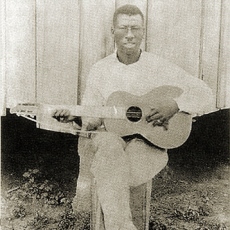

The Delta blues style of blues music is one of the earliest. It originated in the Mississippi Delta, a region of the United States stretching from Memphis, Tennessee, in the north to Vicksburg, Mississippi, in the south and from Helena, Arkansas, in the west to the Yazoo River in the east. The Mississippi Delta is famous for its fertile soil and for its poverty. Delta blues is regarded as a regional variant of country blues. Guitar and harmonica are its dominant instruments; slide guitar (usually played on a steel guitar) is a hallmark of the style. Vocal styles in Delta blues range from introspective and soulful to passionate and fiery.
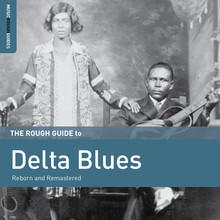
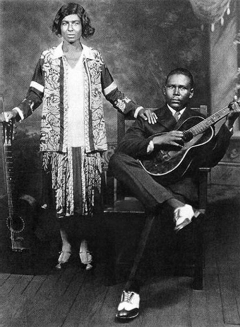
Although Delta blues certainly existed in some form or another at the turn of the 20th century, it was first recorded in the late 1920s, when record companies realized the potential African-American market for "race records". The major labels produced the earliest recordings, consisting mostly of one person singing and playing an instrument. Live performances, however, more commonly involved a group of musicians. Current belief is that Freddie Spruell is the first Delta blues artist to have been recorded; his "Milk Cow Blues" was recorded in Chicago in June 1926. Record company talent scouts made some of the early recordings on field trips to the South, and some performers were invited to travel to northern cities to record. According to Dixon and Godrich (1981), Tommy Johnson and Ishmon Bracey were recorded by Victor on that company's second field trip to Memphis, in 1928. Robert Wilkins was first recorded by Victor in Memphis in 1928, and Big Joe Williams and Garfield Akers by Brunswick/Vocalion, also in Memphis, in 1929.
Son House first recorded in Grafton, Wisconsin, in 1930 for Paramount Records. Charley Patton also recorded for Paramount in Grafton, in June 1929 and May 1930. He also traveled to New York City for recording sessions in January and February 1934. Robert Johnson recorded his only sessions, for ARC, in San Antonio in 1936 and Dallas in 1937.

Subsequently, the early Delta blues (as well as other genres) were extensively recorded by John Lomax and his son Alan Lomax, who crisscrossed the southern United States recording music played and sung by ordinary people, helping establish the canon of genres we know today as American folk music. Their recordings, numbering in the thousands, now reside in the Smithsonian Institution. According to Dixon and Godrich (1981) and Leadbitter and Slaven (1968), Alan Lomax and the Library of Congress researchers did not record any Delta bluesmen or women prior to 1941, when he recorded Son House and Willie Brown near Lake Cormorant, Mississippi, and Muddy Waters at Stovall, Mississippi. However, this claim has been disputed, as John and Alan Lomax had recorded Bukka White in 1939, Lead Belly in 1933 and most likely others.
Scholars disagree as to whether there is a substantial musicological difference between blues that originated in the Mississippi Delta and blues from other parts of the country. The defining characteristics of Delta blues are instrumentation and an emphasis on rhythm and "bottleneck" slide guitar; the basic harmonic structure is not substantially different from that of blues performed elsewhere. Delta blues is a style as much as a geographical form: Skip James and Elmore James, who were not born in the Delta, are considered Delta blues musicians. Performers traveled throughout the Mississippi Delta, Arkansas, Louisiana, Texas, and Tennessee. Eventually, Delta blues spread out across the country, giving rise to a host of regional variations, including Chicago blues and Detroit blues.
Delta blues songs are typically expressed in the first person and often concern love, sex, the traveling lifestyle and its tribulations, sin, salvation and death. Several blues musicians were imprisoned in the Mississippi State Penitentiary at Parchman Farm, which is referred to in songs such as Bukka White's "Parchman Farm Blues" and the folk song "Midnight Special".
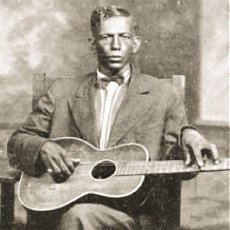
In big-city blues, women singers such as Ma Rainey, Bessie Smith and Mamie Smith dominated the recordings of the 1920s. However, women rarely recorded Delta blues and other rural or folk-style blues. In Delta blues female performers often had some romantic connection to more notable male performers: Geeshie Wiley was reportedly linked with Papa Charlie McCoy, whose brother Kansas Joe McCoy was married to Memphis Minnie, and the seminal Charlie Patton sometimes played and recorded with his wife, Bertha Lee. It was not until late in the 1960s that women began to be heard in recorded performances at the level they had previously enjoyed. It was then that Janis Joplin arrived as the first female performer to achieve both accolades from her peers as a blues performer and crossover commercial success, reaching diverse audiences with a powerful and emotive vocal delivery. Other women influenced by Delta blues, who learned from some of the most notable of the original artists still living, include Bonnie Raitt, Rory Block, and Susan Tedeschi.
Many Delta blues artists, such as Big Joe Williams, moved to Detroit and Chicago, creating a pop-influenced city blues style. This was displaced by the new Chicago blues sound in the early 1950s, pioneered by Delta bluesmen Muddy Waters, Howlin' Wolf and Little Walter, harking back to a Delta-influenced sound, but with amplified instruments.
Delta blues was also an inspiration for the creation of British skiffle music, from which eventually came the British invasion bands, while simultaneously influencing British blues, which led to the birth of early hard rock and heavy metal.
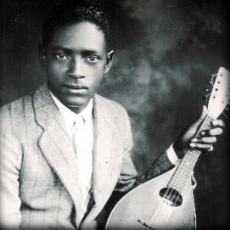

Text is available under the Creative Commons Attribution-ShareAlike License.
Date: February 2017.
Photo Credits:
(1) The Rough Guide to Delta Blues,
(2) Ishmon Bracey,
(3) Son House,
(4) Charley Patton,
(5) Charlie McCoy,
(6) Memphis Minnie & Kansas Joe
(unknown/website).